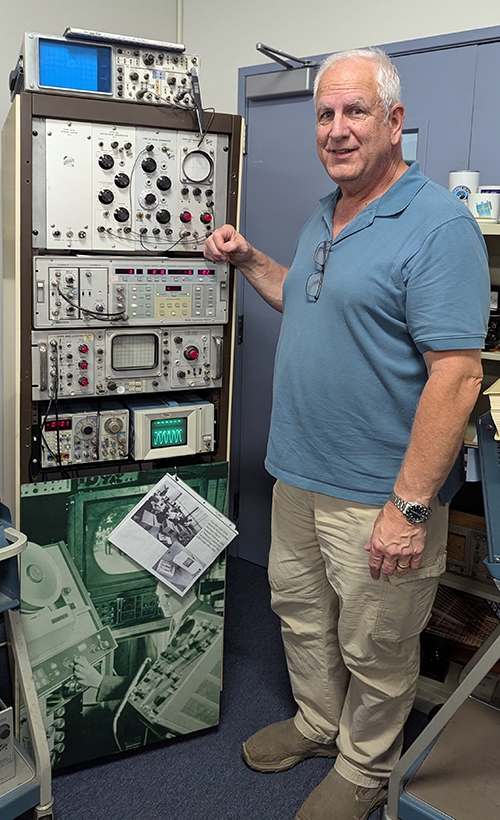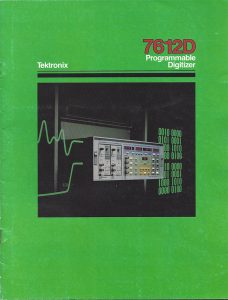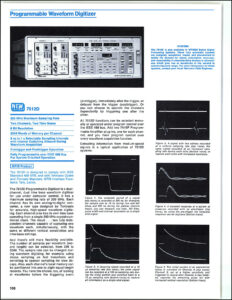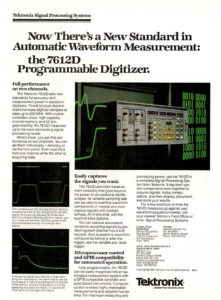The 7612D Programmable Digitizer was introduced in 1980 although didn't appear until the 1981 catalog. The price was $25,700, just over the average annual salary in the US. The 7612D has a vertical bandwidth of 80 MHz with a sample rate of 200 Msamples/s. No semiconductor devices could achieve this performance so Tektronix designed their own utilizing the T7610, a hybrid CRT-semiconductor converter tube. More information on this unique tube is on our T7610 Electron Beam Analog to Digital Converter page and more information is in the T7610, ENOB, and IEEE employee story by Dan Knierim.
The brochure is for the 7612AD 80 MHz waveform digitizer. Click on the image to view the PDF.
These pages from the 1981 catalog describes the 7612D. Click on the image to view the PDF.
This 1982 ad is for the 7612D digitizer. Click on the image to view the PDF.
The Tekscopes 1980 Volume 12 Number 2 provides this summary.
The 7612D is a dual-channel/dual-time base programmable waveform digitizer. It is, essentially, two digitizers in one cabinet. Each channel accepts a 7000-Series vertical plug-in amplifier (fully programmable with two 7 A16Ps), and each channel has its own built-in digital time base.
Sampling intervals, derived from an accurate, crystal-controlled clock, are selectable on each channel from five nanoseconds to one second. Analysis of single-shot signals shorter than one microsecond in duration is possible at the faster sampling rates. Samples are stored as 8-bit words in a 2,048 byte memory for each channel. Each memory may be partitioned into multiple sections of 1024, 512, or 256 words.
The 7612D features the ability to switch sample rates at specified time locations within a record. This allows increased resolution of fast waveform components, or skipping of unwanted waveform portions. All the functions of the instrument are programmable over the GPIB bus through simple mnemonic commands . The 7612D is compatible with the 4050-Series and SPS PDP-11 based
controllers.
The museum has an operational 7612D.
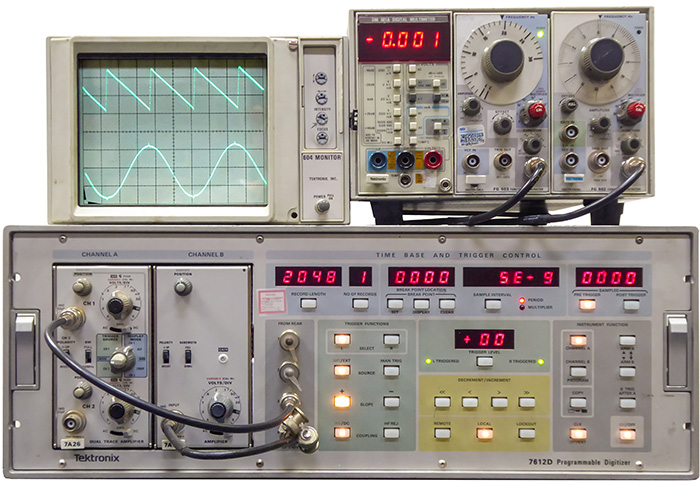
The instrument arrived inoperative and a power supply capacitor and transistor were all that was required for it to come up. As can be seen in this photo channel 2 was inoperative (lower trace).
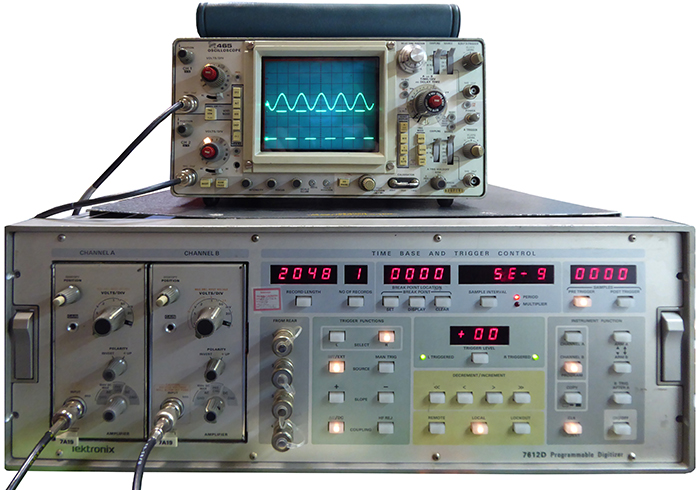
The issue in channel 2 was traced to the second T7610 tube having very low emission. Since these tubes are quite rare our restoration engineer decided to increase the heater voltage and a quick calculation showed that one extra turn on the high voltage transformer would do the trick. This photo shows the two brown heater wires for the T7610 tube.
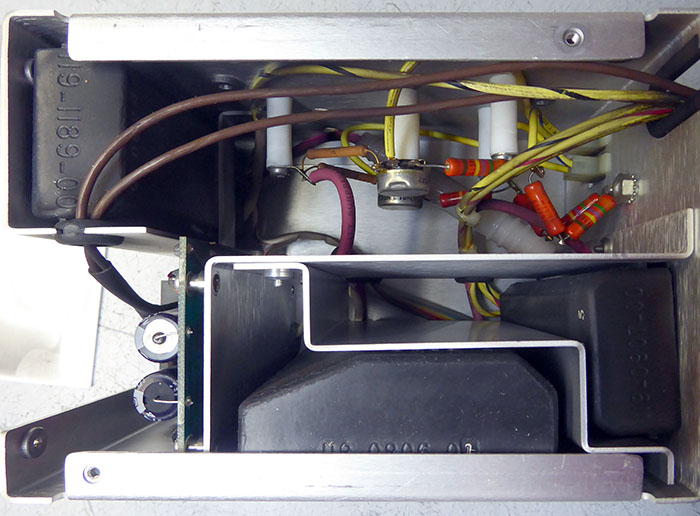
One extra turn of white wire was added and spliced in increased the heater voltage sufficiently to increase emission and restored operation to channel 2.
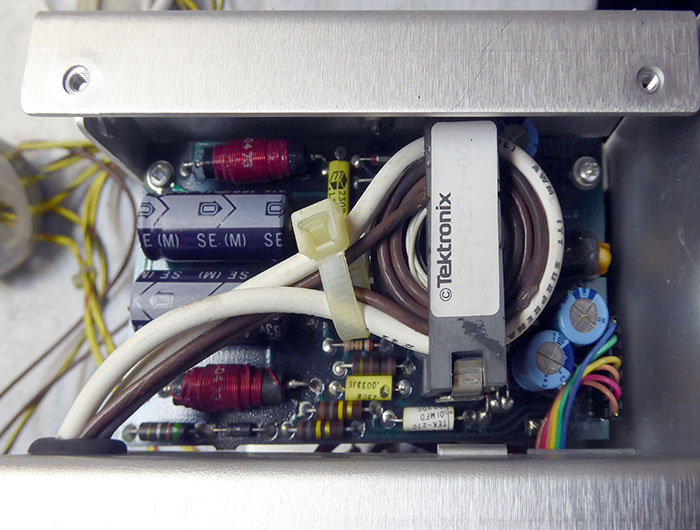
When a cathode is not well activated, or thermally limited, the emission is low and very non-uniform. It is now in a space charge limited mode so the cathode and electron optics are working as intended although at lower current than normal. The increased voltage should be safe for the intended use and the current will increase with more hours of operation.
The 7612D is on exhibit in our system rack. The R564 sits between the 7612D and the function generators and the display.
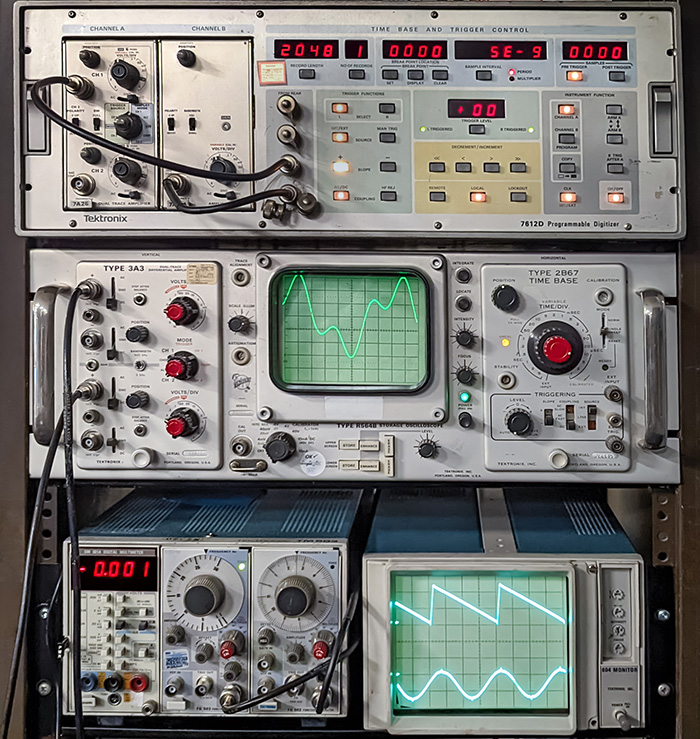
This 7612D required later work and volunteer Bob Dexter got it running again on his first day at the museum. Bob was an Application Engineer who specialized in the high speed digitizers including the 7612D and he certainly was at home with this instrument.
